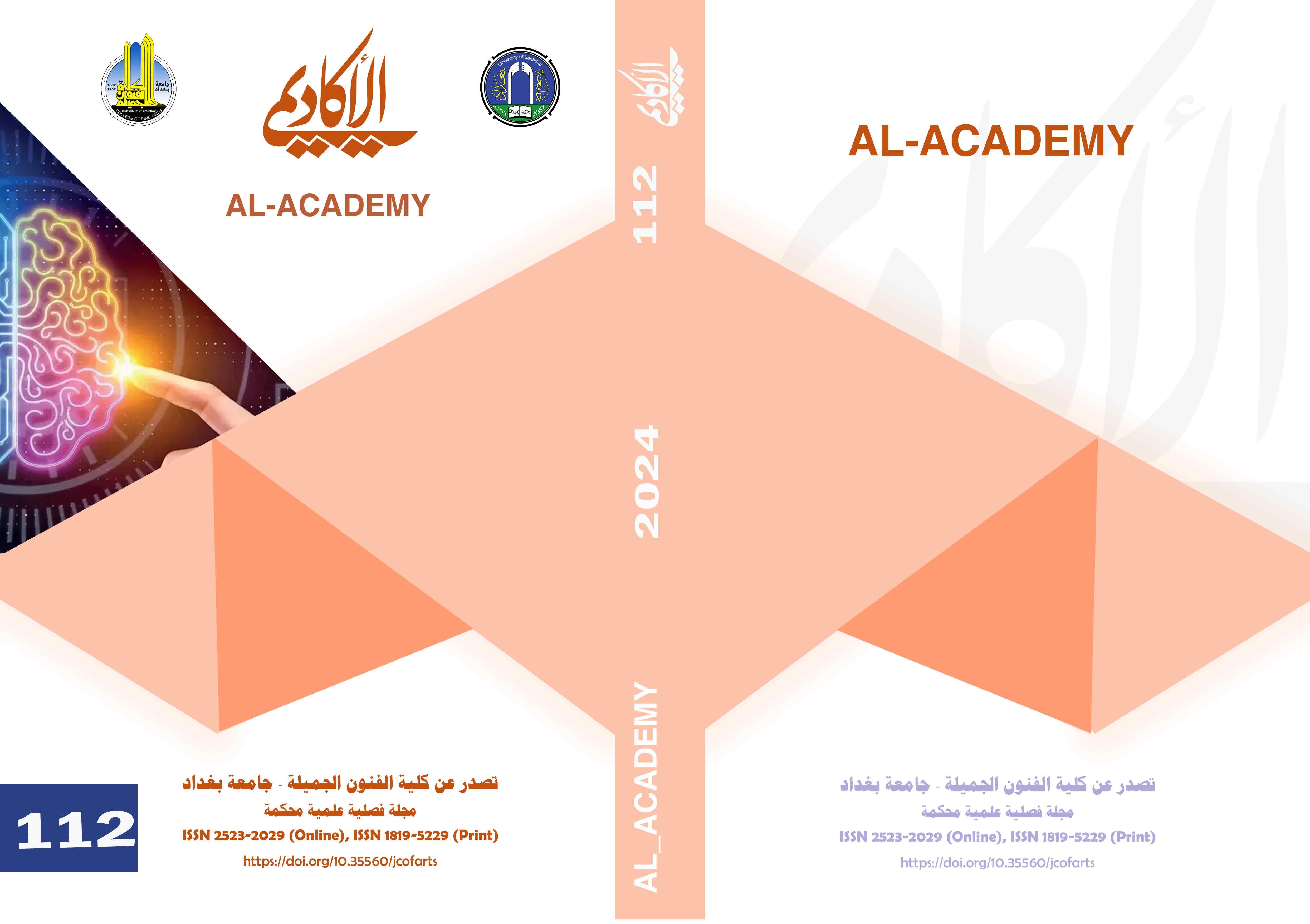الابعاد الفكرية في أنتاج أفلام المنصات الرقمية (منصة نتلفكس إنموذجاً)
DOI:
https://doi.org/10.35560/jcofarts1261الكلمات المفتاحية:
الفكر، الإنتاج، المنصات الرقميةالملخص
تعد المنصات التلفزيونية الرقمية أهم أدوات الأعلام الجديد التي تسعى الى تقديم نفسها كمنصات بديلة عن قنوات التلفزيون التقليدية، وقد استطاعت هذه المنصات أن تضع معايير جديدة للبث عبر القنوات التلفزيونية تتمثل في محتوى وشكل جديد للمضمون المقدم عبر هذه المنصات، في حين انها استقطبت الكثير، وتتسابق المنصات المختلفة لإنتاج محتوى مميز وفريد يدفع بالأفراد للاشتراك، وبدأت بعض المنصات تبحث عن الحصول على البث الحصري لعروض أجنبية وعربية., من هنا أنطلق البحث الموسوم (الابعاد الفكرية في أنتاج أفلام المنصات الرقمية (منصة نتلفكس إنموذجا؟). وقد تضمن البحث مشكلة البحث والحاجة اليه وأهمية البحث واهدافه.
إما الفصل الثاني فتضمن على مبحثان، المبحث الأول: النظرة التاريخية عن المنصات الرقمية، إما في المبحث الثاني فكان بعنوان: الدور الفكري لمنصات انتاج الافلام. وتضمن الفصل الثالث: منهج البحث، ومجتمع البحث، وأداة البحث، ومن ثم تحليل العينة. إما الفصل الرابع: النتائج والاستنتاجات، فقد تم فيه استعراض نتائج البحث ومنها (إن فيلم الأسود والأزرق ترجمة واضحة لسياسة الإنتاج في منصة نتفليكس، إذ هي تبحث في المضامين الفكرية والسياسية والشعبية أحياناً كي لا تفقد فئة محددة من مشاهدي المنصة)، ثم الاستنتاجات والمقترحات والتوصيات، وختم البحث بقائمة المصادر والمراجع.
المراجع
Abdel Hamid, S. (2005). The Age of the Image. Kuwait: The World of Knowledge, National Council for Culture and Arts.
Abdel-Naim, a. (2016). Educational Platforms: Educational Courses Available Online. Amman: Publishing and Distribution House.
Ali, Y. (2004). Thought and Duality of Function and Form in Islamic Architecture. Baghdad: University of Baghdad, College of Engineering, Master Thesis.
Al-Nashar, G. (2018). The Impact of Exposure to Drama via Digital Platforms on Youth’s Relationship to TV Drama. Cairo: Scientific Journal of Radio and Television Research, Cairo University, Faculty of Information.
Al-Rashidi, M. (2019). The reality of computer teachers using electronic educational platforms in teaching and their attitudes towards them. Egypt: Journal of Scientific Research in Education, Volume 3, No. 20.
Al-Razi, M. (1983). Mukhtar Al-Sihah. Baghdad: Al-Nahda Library.
Al-Siddiq, Y. (1980). Concepts and Words in Modern Philosophy. Tunisia: The Arab Book House.
Azma, M. (1986). Aesthetics. Arab Thought: Alexandria.
Corfield, J. (2017). Network vs. Netflix: A Comparative Content Analysis of Demographics Across prime-time Television and Netflix original. usa: University of South Carolina, College of information and Communications,Master Thesis.
Flanjan, G. (1962). On Modern Art. (K. Al-Malakh, Trans.) Egypt: Dar Al-Maarif.
Gibran, M. (B.T). Pioneer of Students. Beirut: House of Knowledge for Millions.
Hakim, R. (1986). The Philosophy of Art according to Suzanne Langer. Baghdad: General Cultural Affairs House.
Hauser, A. (1981). Art and Society Throughout History. (F. Zakaria, Trans.) Beirut: The Arab Institute for Studies and Publishing.
Hijab, M. (2010). Theories of Communication. Cairo: Dar Al-Fajr for Publishing and Distribution.
Khalef, R. (2022). The Effectiveness of Institutional Communication in the Era of Digital Platforms A field study on a sample of users of the Facebook page and website of Umm El-Bouaghi University. Algeria: Larbi Ben M’hidi University of Oum El-Bouaghi, Faculty of Social Sciences and Humanities, Master Thesis.
Maalouf, L. (1946). Al-Munjid in Language. Beirut: Catholic Press.
Othman, D. (2020). The Impact of Watching Series Presented on the Netflix Platform on the Value System of Adolescents. Cairo: Arab Journal for Media and Communication Research, Issue 31.
Radi, W. F.-T. (D.T). New Media: Communicative Transformations and Contemporary Visions. Emirates: University Book House.
Shaheen, A.-B. (2014). Interactivity on the websites of electronic newspapers. Cairo: Dar Al Uloom for Publishing and Distribution.
التنزيلات
منشور
إصدار
القسم
الرخصة
الحقوق الفكرية (c) 2024 Donia Adel Sadeq, Hikmat Al-Baydani

هذا العمل مرخص بموجب Creative Commons Attribution 4.0 International License.













